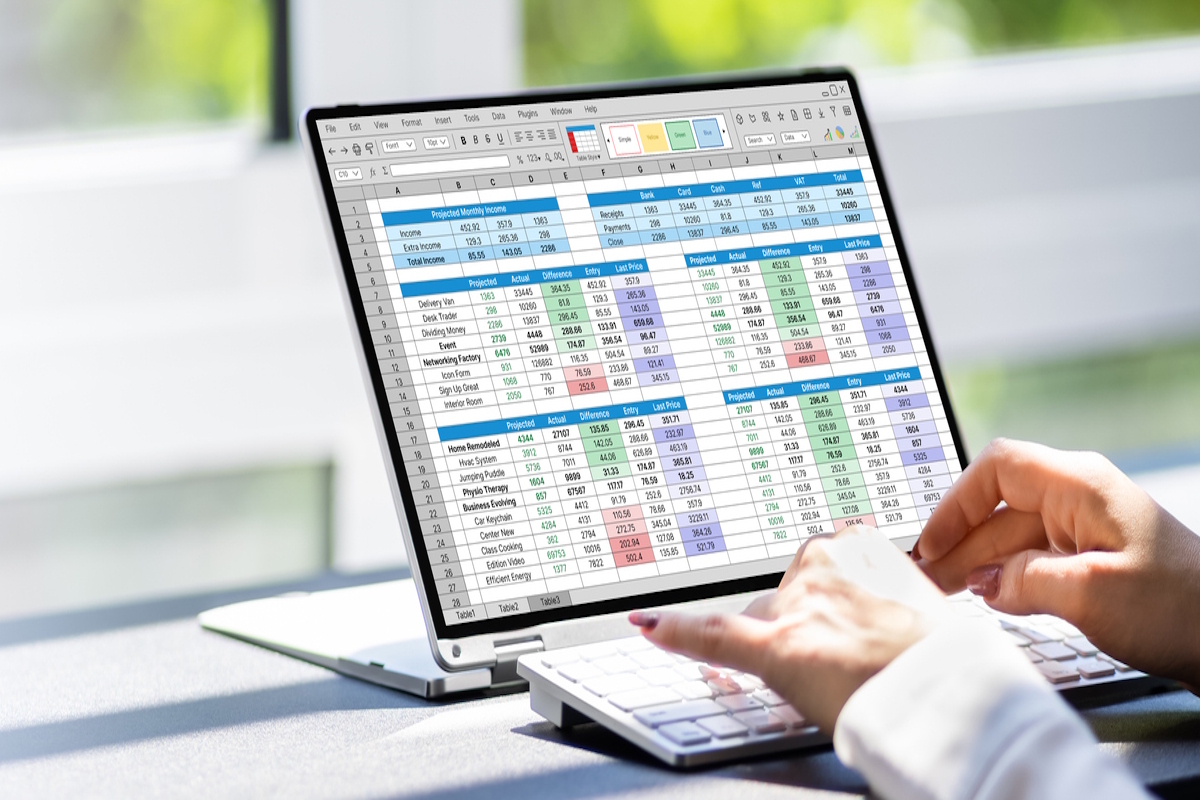Looking beyond Excel

It’s 2025, says Tracey Shirtcliff at SCOPE Better, so why are we not considering alternatives to Microsoft Excel for core business processes?
It’s been 40 years since Microsoft Excel was first released. Shoulder pads were all the rage, Spandau Ballet was on the radio, and Charles and Lady Di had just got married. At the time, Excel was a game changer with its (relatively) simple interface, quick complex calculations, and ability to easily visualise data in exciting ways. It changed how many businesses worked and quickly became an integral part of the business toolkit.
Time has moved on, though, and whilst the platform has tried to keep pace, it now has competition from many powerful tools, leaving us to ask why it is still so widely embedded into everyday business practices.
Why is Excel still so widely used?
People give a whole range of answers to the question ‘Why are you still using Excel?’ They say it’s versatile, that it integrates with the other Microsoft tools easily, that it supports high levels of customisation.
But, more often than not, they’ll say it’s because it’s familiar. Everyone knows Excel. We teach our kids how to make graphs on it in school IT classes. It’s the default opening programme for many file types and the default go-to if we don’t already have a specific tool for the job we’re trying to undertake. In fact, Excel’s superpower is its overarching familiarity. And familiarity alone is not a solid excuse on which to base a software decision.
So, if not Excel, then what? There are many powerful tools out there to support most business needs in real-time, automatically syncing with other systems – pricing, planning, resourcing. The problem is that most people have no idea what they should be looking for.
Evaluating alternatives
When thinking about which software tool to use for core business processes, organisations should review how well different tools match their key requirements.
Collaboration: Should I download it and edit on my desktop, or should I open it up in a browser? I want to open it in the browser, but it’s open on my desktop! My colleague just made an edit at the same time as me, and now I’ve glitched the whole spreadsheet! Which version are we using?
At its core, Excel is a desktop app designed for one person to use on their machine. They might then share the file, and the next person can edit it and share it back, avoiding the frustrations noted above. Microsoft has taken Excel’s existing framework and overlaid it with cloud-based collaboration functionality to compete with other tools on the market. Many spreadsheet tools and most cloud-based platforms are explicitly built to facilitate real-time collaboration between multiple users, removing the risks and pains of version control.
Advanced analytics: We’re now living in the age of GenAI. At the click of a button, AI-powered tools can instantly analyse data and generate highly complex visualisations, as well as providing in-depth analysis.
Many of the Excel use cases can be undertaken by other powerful tools that will scale along with your data needs. These tools can make Excel’s pivot tables and charts, with their complex formulas, redundant. We simply no longer need to know how to create 100+ character long formulas to build analysis and visualise data.
Scalability: As each year goes by, the amount of data we gather and analyse is growing. There is a need to process larger and larger data sets. And this problem is only going to get worse as AI deployment grows. Many Excel alternatives are designed to handle this load, and to do so without suffering from data lags and crashing. New cloud-based platforms are now designed to handle very large amounts of data.
Data security and control: Data security is a core focus for all contemporary businesses. It’s pretty standard these days for all new employees to go through a compulsory training module that warns of the dangers of information being passed around casually on spreadsheets.
Most contemporary tools that manage data give you granular control over who can view, edit, or share data. You can assign permissions based on user roles, enhancing security and data privacy. Many of them also automatically back up data, protecting against crashes and user error. If they’re cloud-based, they sit behind complex firewalls and security protections.
Integrations and connectivity: Since Excel first came onto the scene, the average company’s tech stack has grown significantly. Today, businesses rely on a wide range of tools that offer huge potential when it comes to integration and connectivity. Excel communicates well within the Microsoft ecosystem, but it can be less effective when it comes to integrating with other platforms.
Many of today’s Excel alternatives and modern business platforms are built to connect seamlessly with a wide variety of tools –CRMs, marketing platforms, and accounting software. This makes it easy to keep everything in sync and maintain a smooth, efficient workflow across your team or entire business.
When it comes to adaptability, Excel allows for some customisation, but it usually requires the use of Visual Basic for Applications (VBA), which can be quite technical and isn’t especially user-friendly. Modern tools are designed with flexibility in mind. They typically come with built-in, easy-to-use features for customisation and automation, so you can build workflows and streamline repetitive tasks without needing to write code or rely on advanced technical skills.
User experience: Take a look at Excel now, and take a look at the screenshots from when it was first launched in the 1980s. It might be less boxy with better fonts, but the basic layouts are pretty much the same. It’s a familiar feature on our computers, but there is a danger of losing time in the numerous drop-downs and tabs along the top.
Today’s alternatives have been designed not only to be visually appealing but also intuitive for non-technical users. This is particularly important when you’re seeking a tool to support pricing, for example, where sales team members need to rapidly access data to create quotes and pitches without having to stop and think through each step of the process.
Excel was revolutionary in its time. The business world has moved on, and so have the tools we use to run it. Habit or familiarity is not a sufficient reason for clinging to Excel. Organisations must ensure the tools they use are sufficiently fast, smart and secure for their purposes. The modern workplace demands flexibility, scalability, and collaboration, and the tools we rely on should meet that standard.
It’s time to take a step back and consider whether Excel is still the right fit. It may well be, but with so many purpose-built tools now available – tools that are easy to use, secure, and well-suited to modern workflows – there’s real value in exploring alternatives. So, isn’t it time that your business began looking beyond Excel?
Tracey Shirtcliff is founder and CEO of SCOPE Better, the Pricing Platform designed for professional services.
Main image courtesy of iStockPhoto and AndreyPopov

Business Reporter Team
You may also like
Most Viewed
Winston House, 3rd Floor, Units 306-309, 2-4 Dollis Park, London, N3 1HF
23-29 Hendon Lane, London, N3 1RT
020 8349 4363
© 2025, Lyonsdown Limited. Business Reporter® is a registered trademark of Lyonsdown Ltd. VAT registration number: 830519543





